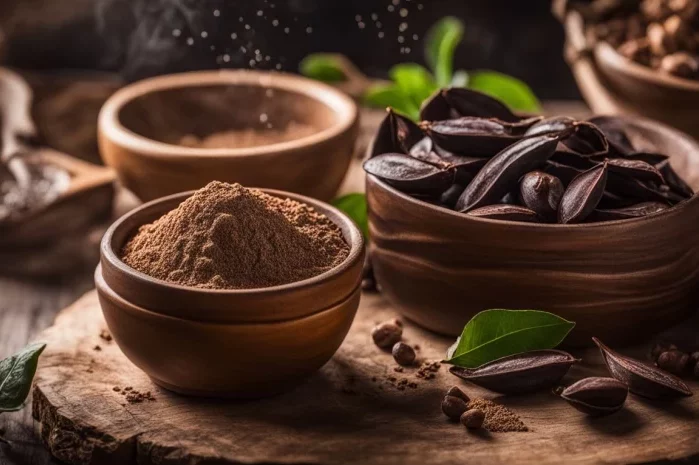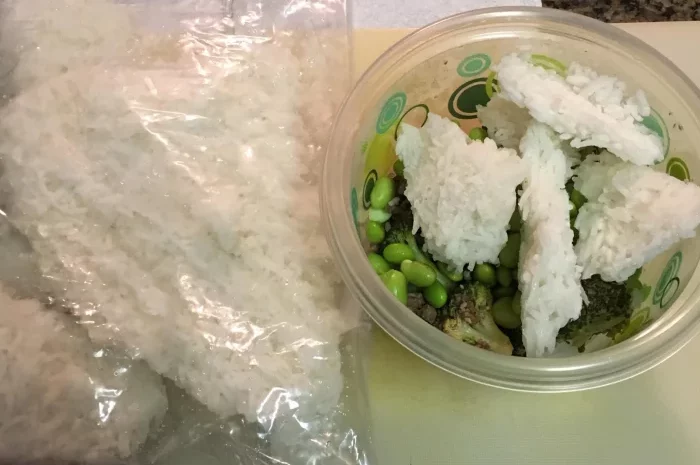Cocoa powder is a beloved ingredient in baking, renowned for its rich chocolate flavor and versatility. However, there may be instances when you find yourself without this essential ingredient or need a suitable alternative due to dietary restrictions or preferences.
Fortunately, there are several excellent substitutes available that can provide similar flavor, texture, and color to your favorite cocoa powder recipes.
In this comprehensive guide, we’ll explore a variety of cocoa powder substitutes, ranging from pantry staples to specialty ingredients. Whether you’re baking brownies, cakes, or cookies, you’ll discover the perfect replacement to ensure your culinary creations are nothing short of spectacular.
Understanding Cocoa Powder and Its Role in Baking
Before we delve into cocoa powder substitutes, let’s take a moment to understand the role of cocoa powder in baking:
Origins and Processing:
Cocoa powder is derived from cocoa beans, the seeds of the cacao tree. These beans are harvested, fermented, dried, roasted, and then ground into a fine powder.
Cocoa powder comes in two primary forms: natural cocoa powder and Dutch-processed (alkalized) cocoa powder. Natural cocoa powder is acidic and has a lighter color, while Dutch-processed cocoa powder is treated with an alkaline solution to neutralize its acidity and has a darker color and milder flavor.
Role in Baking:
Cocoa powder adds depth, richness, and a distinctive chocolate flavor to baked goods. It also contributes to the color and texture of the final product. Cocoa powder is commonly used in recipes for cakes, brownies, cookies, muffins, and more. Its versatility makes it an essential ingredient in any baker’s pantry.
Factors to Consider When Substituting Cocoa Powder
When selecting a cocoa powder substitute, consider the following factors:
1. Flavor Profile:
Choose a substitute that closely matches the flavor profile of cocoa powder. Look for ingredients with a rich chocolate flavor and minimal additional flavors or aromas.
2. Color:
Consider the color of the substitute and how it will impact the appearance of your baked goods. Aim for a replacement that closely resembles the deep, rich color of cocoa powder.
3. Texture:
Pay attention to the texture of the substitute and how it will affect the consistency of your batter or dough. Select a replacement that is finely ground and similar in texture to cocoa powder.
4. Acidity:
If your recipe calls for natural cocoa powder, consider the acidity of the substitute. Ingredients with high acidity levels may require adjustments to the recipe to maintain the desired balance of flavors.
5. Dietary Restrictions:
Take into account any dietary restrictions or preferences, such as allergies, intolerances, or dietary preferences (e.g., vegan, gluten-free). Choose substitutes that align with your dietary needs and preferences.
The Best Cocoa Powder Substitutes
Now, let’s explore some of the best cocoa powder substitutes and how to use them in your baking:
1. Unsweetened Chocolate:
Flavor Profile: Rich, intense chocolate flavor with a slightly bitter taste.
Color: Dark brown.
Texture: Solid at room temperature; melts when heated.
How to Use: Melt unsweetened chocolate and use it in place of cocoa powder, adjusting the amount of sugar in the recipe accordingly. Substitute 1 ounce (28 grams) of unsweetened chocolate for every 3 tablespoons of cocoa powder.
2. Carob Powder:
Flavor Profile: Sweet, nutty flavor with subtle chocolate undertones.
Color: Dark brown to reddish-brown.
Texture: Fine powder.
How to Use: Replace cocoa powder with an equal amount of carob powder in recipes. Keep in mind that carob powder is sweeter than cocoa powder, so you may need to adjust the amount of sugar in the recipe.
3. Cacao Powder:
Flavor Profile: Rich, intense chocolate flavor with a slightly bitter taste.
Color: Dark brown to reddish-brown.
Texture: Fine powder.
How to Use: Substitute cacao powder for cocoa powder in a 1:1 ratio. Cacao powder is less processed than cocoa powder and retains more of the cacao bean’s natural nutrients and antioxidants.
4. Espresso Powder:
Flavor Profile: Intense, roasted coffee flavor with hints of chocolate.
Color: Dark brown.
Texture: Fine powder.
How to Use: Add espresso powder to your recipe to enhance the chocolate flavor. Use 1 teaspoon of espresso powder for every 2 tablespoons of cocoa powder called for in the recipe.
5. Black Cocoa Powder:
Flavor Profile: Intense, dark chocolate flavor with a slightly bitter taste.
Color: Very dark brown to black.
Texture: Fine powder.
How to Use: Substitute black cocoa powder for cocoa powder in recipes that call for a deep, rich chocolate flavor. Use it in combination with regular cocoa powder for a more complex flavor profile.
Conclusion
In the world of baking, the quest for the perfect cocoa powder substitute is both challenging and rewarding. Whether you’re looking for a like-for-like replacement or an alternative that offers a unique twist on traditional recipes, there are plenty of options to explore.
From unsweetened chocolate to carob powder, cacao powder, espresso powder, and black cocoa powder, each substitute brings its own flavor, color, and texture to the table.
By considering factors such as flavor profile, color, texture, acidity, and dietary restrictions, you can select the ideal cocoa powder substitute to elevate your baking creations and delight your taste buds.
So roll up your sleeves, preheat your oven, and embark on a delicious journey of experimentation and discovery—all with the perfect cocoa powder substitute by your side.

























